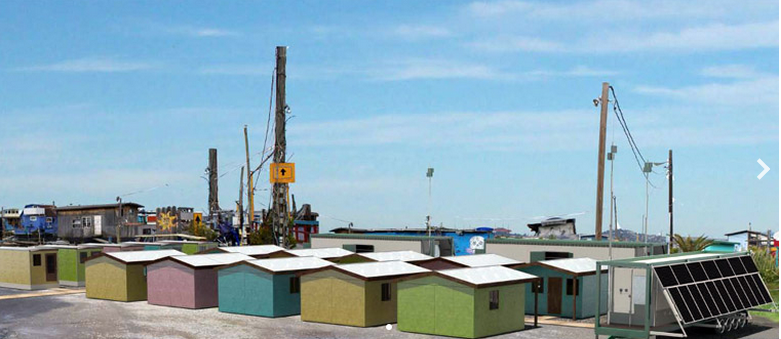Solar power to the rescue: life, water after disasters


Solar power technology could be a lifesaver in the aftermath of the next major disaster (or zombie apocalypse) and sustain life in remotes areas of the world thanks to the entrepreneurship of a California start-up.
After five years of R&D, San Francisco start-up Green Horizon has begun shipping a portable, self-sufficient emergency response system called the CSU (Central Service Unit). The CSU operates without any supporting infrastructure, providing communications, water, and power.
While the genesis of the CSU was disaster relief, the company believes there are also markets for NGOs, mining material exploration, fuel exploration, and military uses.
The CSU is built to ISO specifications for shipping on aircraft, railcars, and trucks, said Green Horizon CFO Bob Booth. It is designed to be set up within minutes, and will endure up to 150 mph winds once it's leveled. Features include:
- A self-leveling equalization system that works within minutes
- Multiple power sources (5 KW solar, and a 12 KW back-up diesel generator)
- 74,000 watts of power on the inverter and solar system along
- A hydrogen fuel cell technology provides a further 5kW of charge power for the batteries
- Communications system has Wi-Fi, phone, and cable services.
- Power, communications and additional Green Horizon products can be monitored from remote locations
- CSU provides water, power, communications, security monitoring, and grey and brackish water systems
- 19,000 gallon a day water filtration system and a 2,000-gallon per day grey water system
Each CSU costs approximately US$200,000-$220,000. Green Horizon also builds modular housing; each CSU can support about 20 housing units. The homes are designed to be as eco-friendly as possible, and are mostly locally sourced, Booth said.
"When a disaster hits, people can only go without water for certain periods of time. We are trying to provide an environment for people to survive and start recovering. [CSU] will bridge the gap between the time it hit and emergency relief services arrive for support," Booth said.
Survivors endured days without clean drinking water in the wake of Hurricane Katrina, and public debate arose around whether government's response time was sufficient to provide relief when it was most needed.
Images of Katrina victims clinging to rooftops in desperate need of drinking water are burned into the national consciousness of the United States. Innovative uses of renewable energy could keep that memory from becoming a new reality.
This post was originally published on Smartplanet.com